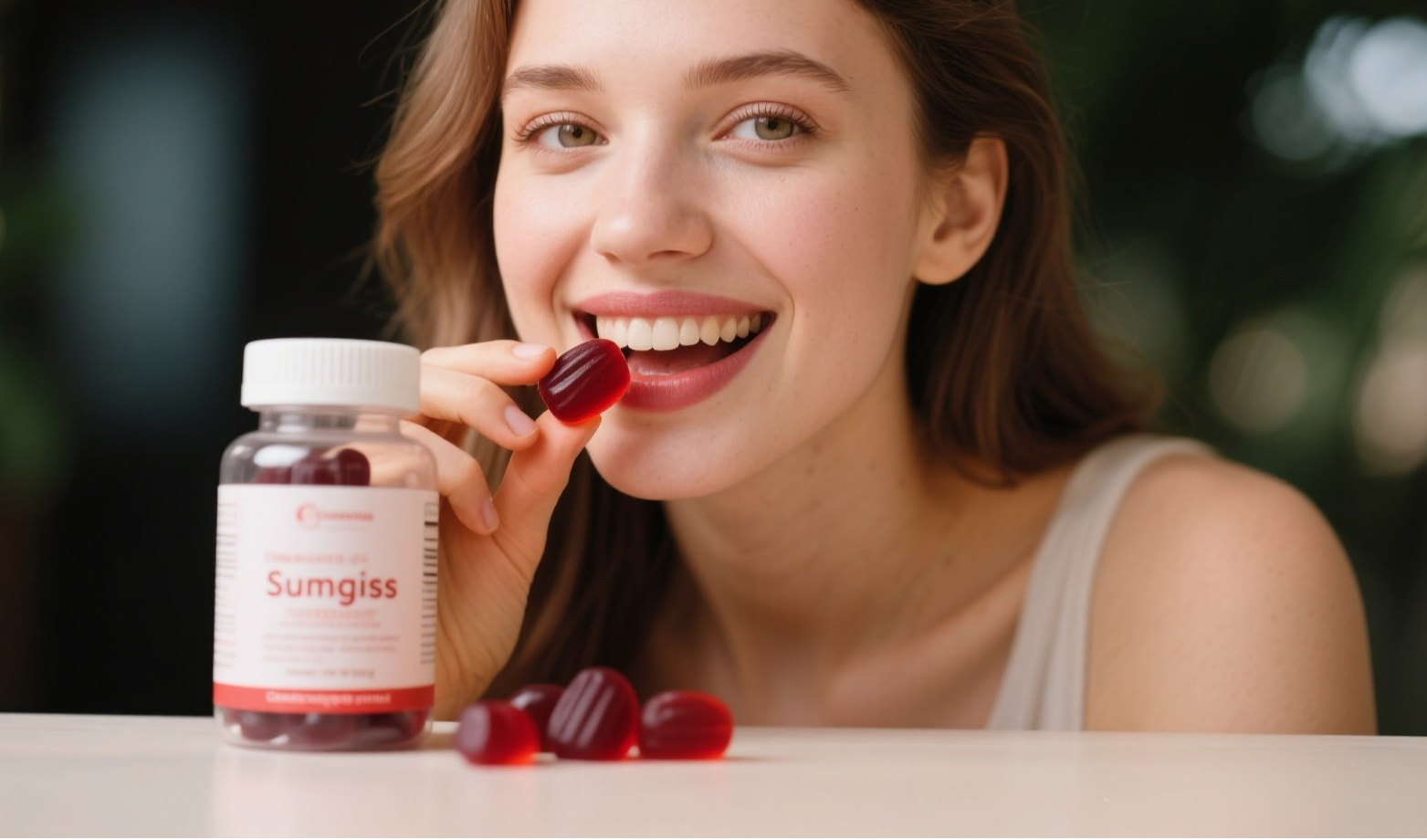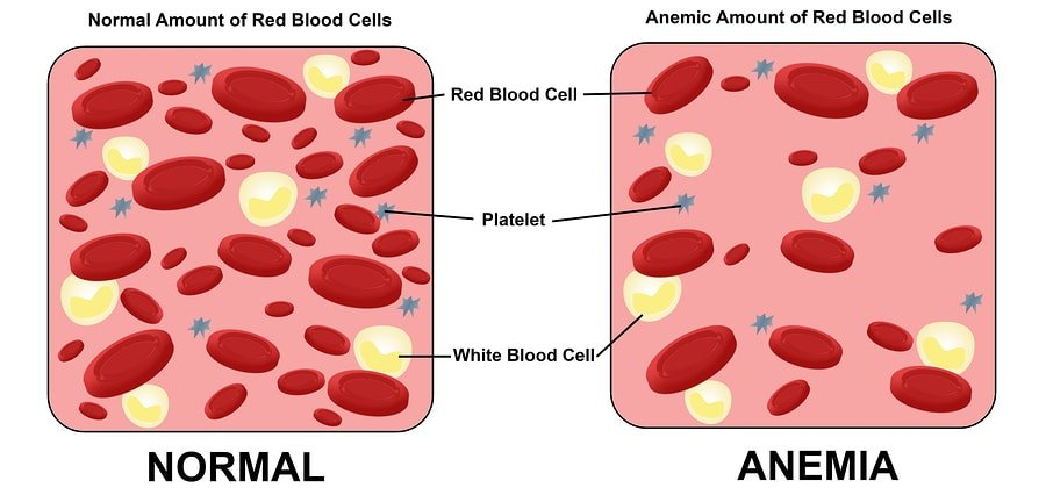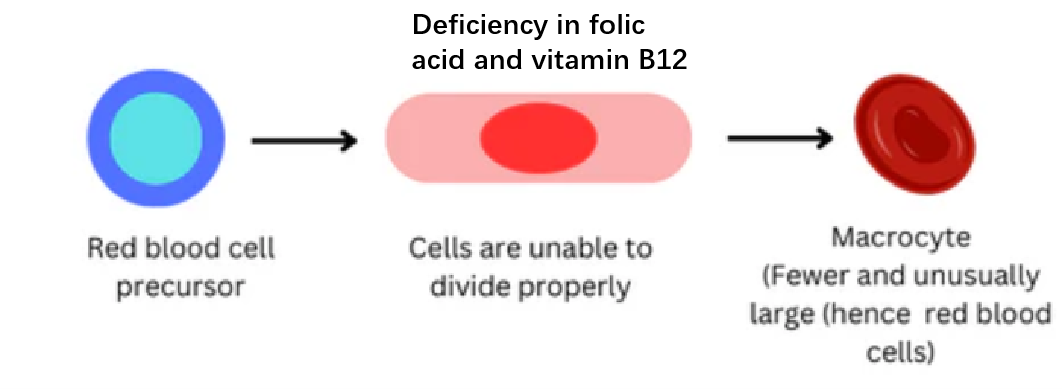Data shows that women lose an average of about 40 milliliters of blood during each menstrual cycle. Each milliliter of blood contains approximately 0.4–0.5 milligrams of iron, meaning a woman may lose 16–20 milligrams of iron per cycle. If not replenished in time, this consistent iron loss can lead to fatigue, pallor, and other signs of qi deficiency. In more severe cases, iron deficiency may cause symptoms like dizziness, chest tightness, palpitations, weakened immunity, and iron-deficiency anemia. Among women with heavier menstrual flows, the prevalence of anemia can reach as high as one-third [1].
Iron: Essential for a Healthy Complexion
Iron plays a vital role in the synthesis of hemoglobin and the transport of oxygen throughout the body.
A radiant complexion reflects healthy red blood cells, which are rich in hemoglobin—a protein responsible for carrying oxygen. At the core of hemoglobin lies the heme group, which contains an iron ion (Fe²⁺). Iron is a critical raw material in the synthesis of heme, enabling the protein to bind and transport oxygen effectively [2].
The human body renews about 1% of its red blood cells daily. As red blood cells are constantly being replaced, a steady supply of iron is necessary. Insufficient iron intake leads to reduced hemoglobin production, slower generation of red blood cells, and a decrease in their size and oxygen-carrying capacity, all of which can result in anemia and a lackluster complexion [3].
Vitamin B: Crucial for Red Blood Cell Production
Folic acid and vitamin B12 are essential for the formation of red blood cells. Without sufficient levels of these nutrients, the DNA synthesis required for red blood cell development is impaired. During hematopoiesis in the bone marrow, precursor cells (such as proerythroblasts) must undergo DNA replication and division to mature into healthy red blood cells.
If DNA synthesis is disrupted, nuclear division is delayed while cytoplasmic RNA production continues. This imbalance leads to enlarged, underdeveloped cells known as megaloblasts. These cells are fragile and poorly deformable, making it difficult for them to pass through narrow capillaries and spleen sinusoids. As a result, their lifespan is shortened and their ability to transport oxygen and carbon dioxide is compromised, contributing to symptoms of anemia [3].
Nutritionist-Recommended Combinations
Natural Antioxidant Support – Beauty from Within
Iron + Vitamin B12 + Folic Acid + Vitamin E + Natural Polyphenols
Mood Balance & Energy Boost
Iron + Vitamin B12 + Folic Acid + Vitamin B6 + Magnesium + GABA
Better Sleep for Radiant Skin
Iron + Vitamin B12 + Folic Acid + Vitamin D + Vitamin B6 + Magnesium + GABA
Immune Stability for a Healthy Appearance
Iron + Vitamin A + Folic Acid + Vitamin B12 + Vitamin E + Vitamin B6 + Vitamin C + Zinc + Copper + Selenium
Pure-Chel™ Ferrous Bisglycinate — Key to Efficient Iron Absorption
Fully Chelation, High Bioavailability
Pure-Chel™ ferrous bisglycinate features a double amino acid chelation structure, making the mineral more stable and resistant to degradation by stomach acid. This allows for more efficient absorption, particularly beneficial for the elderly, children, and individuals with gastrointestinal disorders.
Rapid Absorption
Glycine is the simplest amino acid, known for its small structure and unique chemical properties. The human digestive system has specialized transport mechanisms for glycine, enabling its salts to be quickly absorbed into the bloodstream via intestinal cells.
Gentle on the Stomach
Glycine is inherently mild and non-irritating to the gastrointestinal tract. When used as a chelating agent to bind minerals like iron, it effectively encapsulates the active ions, reducing direct contact with the stomach lining and minimizing irritation.
Avoiding the Pitfalls of “Ineffective Iron Supplementation”
With increasing awareness of the importance of bioavailable iron, targeted supplementation is now in focus. Pure-Chel™ ferrous bisglycinate, with its high absorption rate and gentle nature, combined with functional nutrients like vitamins, minerals, and amino acids, offers an advanced and professional solution for women’s nutritional needs—deeply nourishing from within for a lasting, healthy glow.
References:
[1] Mansour D, Hofmann A, Gemzell-Danielsson K. A review of clinical guidelines on the management of iron deficiency and iron-deficiency anemia in women with heavy menstrual bleeding. Advances in Therapy, 2021, 38: 201-225.
[2] Ditki.com. Hemoglobin and Myoglobin: 1. Heme Group. Ditki Medical & Biological Sciences, 17 Dec. 2024.
[3] Koury, Mark J, and Prem Ponka. New insights into erythropoiesis: the roles of folate, vitamin B12, and iron. Annual Review of Nutrition, vol. 24 (2004): 105–131. doi:10.1146/annurev.nutr.24.012003.132306





